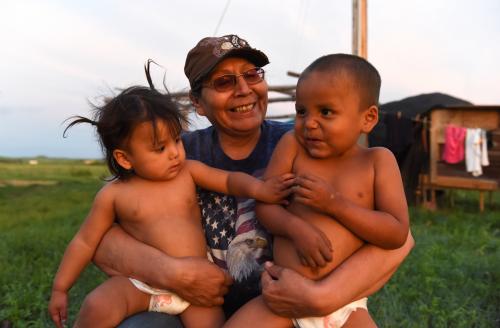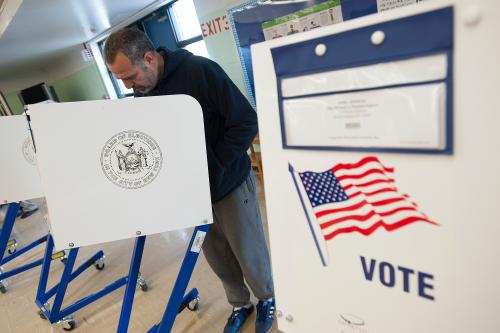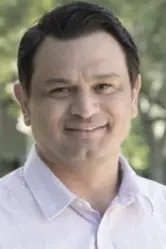On February 14, Brookings hosted a symposium bringing together diverse perspectives on the American Indian gaming industry featuring tribal officials, academics, government regulators and industry officials. Panelists discussed where the industry is moving as it matures from its official start in 1988 with the signing of the Indian Gaming Regulatory Act.
Following the event, we asked several participants to share their experiences and opinions on American Indian gaming and the effect of the industry on their communities. Their responses are featured in short videos throughout this blog.
Challenges in the American Indian Gaming Industry
As the gaming industry grows, it faces the challenges of differentiating itself from the commercial gaming industry, engaging the next generation of tribal members, and contributing to local tribal economies.
The first panel, moderated by Dr. Katherine Spilde of San Diego State University, addressed emerging concerns and issues for the American Indian gaming industry over the next 30 years. Dr. Spilde began the panel by highlighting historical work that documents the research on the impact of the American Indian gaming industry. She also stressed the concept of “Return on Community,” which differentiates the American Indian gaming industry from the commercial gaming industry.
Ernest Stevens, Chair of the National Indian Gaming Association, explained how the size and influence of the entire industry has caught up to that of the commercial gaming industry. He also explained how educating the next generation has led to career paths for tribal members in casino operations.
Chair Cody Martinez, Chairman of the Sycuan Band of the Kumeyaay Nation, spoke about the importance of diversifying tribal economies and the public services they are able to undertake as a result of the revenues from gaming.
Patrice Kunesh, director of the Center for Indian Country Development at the Minneapolis Federal Reserve, described the central role the casino industry plays in the labor force for both reservation economies and adjacent economies. She also explained how adoption of uniform commercial codes, infrastructure development, and broadband expansion will assure future economic opportunities for the on-reservation communities.
Finally, John Tahsuda, Principal Deputy Assistant Secretary for Indian Affairs, discussed the importance of land into trust requirements as defined by existing US law. This is emerging as a primary issue for US tribal governments throughout the lower 48 states.
The Impact of American Indian Gaming
Economic development associated with the gaming industry has influenced outcomes both on and off American Indian reservations over the past 30 years. The second panel, moderated by Dr. Miriam Jorgensen, Research Director of the Native Nations Institute at the University of Arizona and the Harvard Project on American Indian Economic Development, focused on existing research that illustrates the impact of American Indian gaming on tribal governments, citizens and neighboring communities. The panel also identified additional research questions and concerns that have yet to be answered.
Dr. Raymond Foxworth from the First Nations Development Institute focused on research that helps to identify the public perception (via focus groups) of American Indians. The results indicate that the average US citizen knows little to nothing about American Indians. Most views are based on outdated notions of American Indians.
Dr. Randall Akee of the Brookings Institution and UCLA, spoke about existing research on the impact of per capita transfer payments made to tribal citizens. He showed research outcomes which indicate that those who were made less poor (escaped poverty) had children who achieved higher educational outcomes and reduced arrests. Additionally, there was evidence for an increase in voter participation when these children became adults themselves. Dr. Akee also showed that establishments located on American Indian reservations had higher survival probabilities over the Great Recession period than establishments located in adjacent counties.
Jonathan Taylor of the Taylor Policy Group stressed that the gaming industry is an outgrowth of the self-determination of tribal governments and their inherent sovereignty. He also described the impact on political and cultural dynamics of return migration back to the reservations as a result of increased economic activities on the reservation.
Finally, Dr. Thaddieus Conner of New Mexico State University discussed the changing landscape of state-tribal relationships over time with regard to the gaming compacts. He identified a movement towards more revenue-sharing relationships over time and higher restrictions on the number of machines allowed in facilities.
Watch the full video of the related event, The future of American Indian gaming: The next 30 years.






Commentary
The transformation of the American Indian gaming industry
April 8, 2019